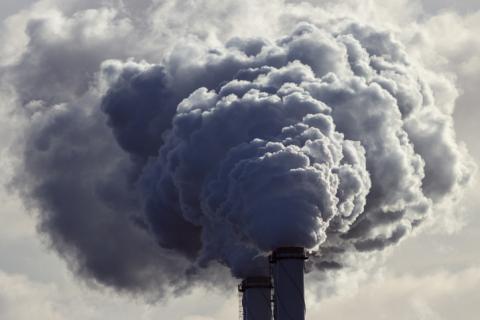
Firms already account for financial, operational and reputational risks they face. Soon they will have to make sense of how climate change will impact upon their businesses. How ready is your company?
One does not need to be a climate scientist to understand the supply chain disruptions associated with the physical impacts of climate change (e.g. inland flooding, extreme heat, and sea level rise) pose potentially severe threats to financial markets. Such fears have provoked investors, shareholders, lenders and underwriters to demand a more transparent reporting system for climate-related financial data. As I write, Commonwealth Bank of Australia is being sued by its shareholders over an alleged failure to properly disclose the risks its business faces from climate change.
In June 2017, the Task Force on Climate-Related Financial Disclosures (TCFD) – a global task force created by the G20 – developed a framework for companies to voluntarily disclose the financial impact of their climate risks. It has now been backed by more than 100 companies, holding $11 trillion of assets.
The recommendations of the TCFD draw on concerns assets may be mispriced because the full extent of climate risk is not fully understood by investors. According to Bank of England Governor Mark Carney, “Widespread adoption [of the TCFD recommendations] will provide investors, banks and insurers with that information, helping minimise the risk that market adjustments to climate change will be incomplete, late and potentially destabilising.” Although several disclosure frameworks have emerged to meet this demand, there is not yet a standardised way of reporting.
The uncertainties around future emissions and the response of the global climate system make forecasting risk an extraordinarily difficult exercise
The TCFD recommends companies should disclose both the actual and potential impact of those risks on operations, strategy and financial planning. The recommendations also call for clarity on governance arrangements and risk management processes.
Bulge bracket banks, insurers, and companies representing more than $3 trillion in market capitalisation have made public commitments to support the recommendations. Banks and investment groups in particular will face pressure to show they are better communicating the risks posed to their operations by climate change; it is moving quickly from a ‘nice thing to do’ to a business imperative. In 2015, France became the first country to introduce mandatory climate change reporting for institutional investors.
As these requirements go global, board directors will be expected to ensure their corporations appropriately report climate-related risks, just as they do with other material risks such as accelerated technology advancements. So what are the financial services firms that endorsed the guidelines – including Bank of America Merrill Lynch, Barclays and HSBC – doing to prepare?
Assets may be mispriced because the full extent of climate risk is not fully understood by investors
The common starting point is to undertake a full assessment of where climate-related risk lies within a firm, focusing on the transition and physical risks prioritised by the TCFD. These firms are also assessing the current state of their processes and data quality for identifying and reporting climate risk. They are upgrading their systems for reporting carbon emissions and studying new ways to translate this data into financial risk. This is not ‘environmental management’: it is an exercise in enterprise risk management.
Companies will eventually need to ensure their quality assurance and compliance approaches for climate risk are as rigorous as they are for financial disclosures. Many will look at integrating climate change into mainstream financial filings. They can do so by creating internal controls and external assurance processes, which would enhance objectivity and credibility.
While firms are putting new policies into action, many points of contention remain. For example, which future climate scenario should corporations base their reporting strategy on? The uncertainties around future emissions and the response of the global climate system make forecasting risk an extraordinarily difficult exercise. And while in most countries there is no immediate requirement to disclose, companies should use this time to get ahead.
In June, new evidence emerged that Exxon Mobil may have overstated the value of its assets and potentially defrauded its shareholders by not taking into account what carbon pollution will eventually cost the company. Lawsuits and investigations are now underway. That’s not a situation any company wishes to find itself in.
The TCFD has fired a first shot across the bow. Pressure from shareholders, institutional investors and the government seems certain to drive forward a demand for greater transparency and better risk management. The climate will only get worse for firms that refuse to adapt.
Image taken with kind permission of the Royal Geographical Society.


